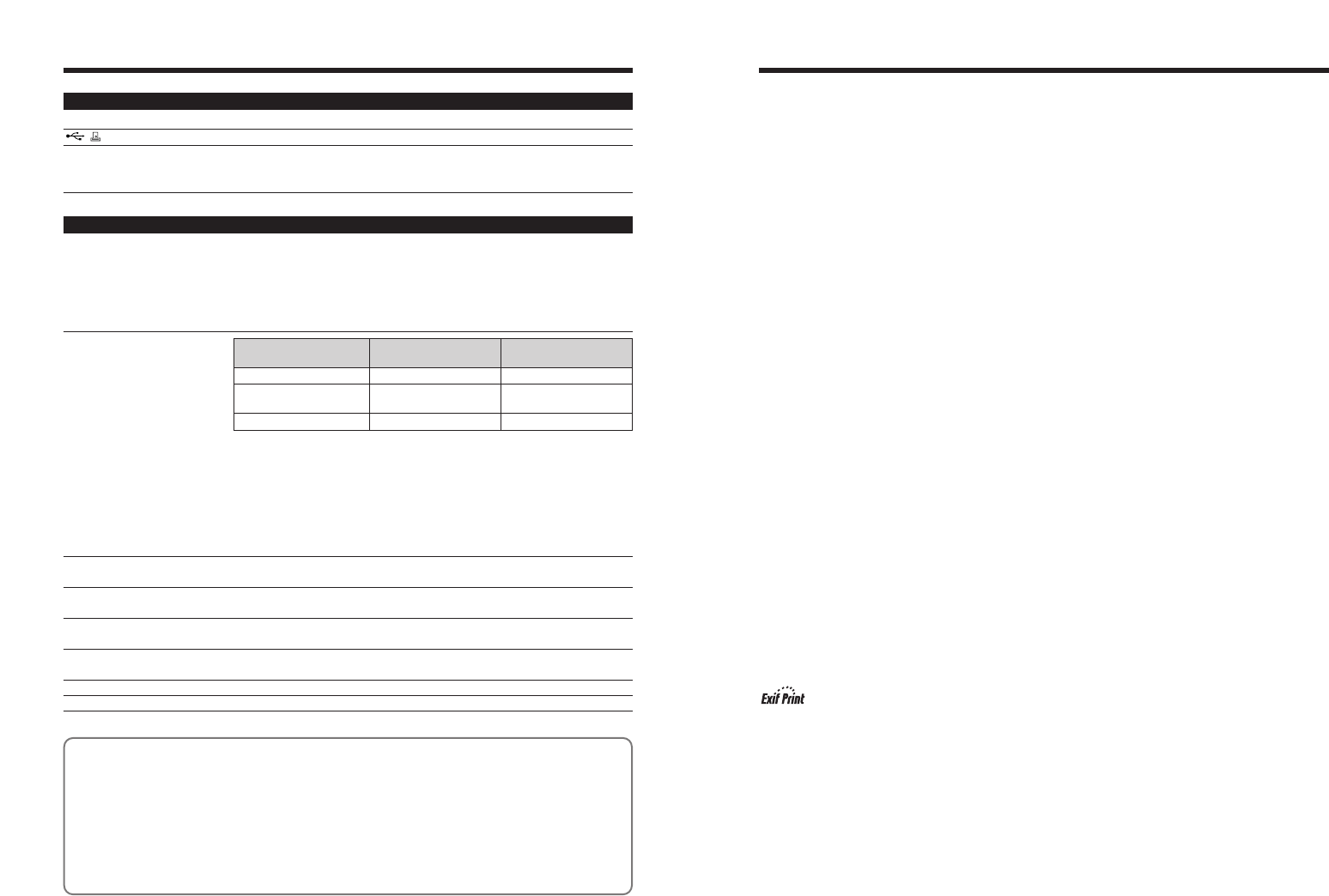
8180
Explanation of Terms
Deactivated batteries:
Leaving an Ni-MH battery unused in storage for a long period may cause a rise in the level of substances that
inhibit current flow inside the battery and result in a dormant battery. A battery in this state is referred to as
deactivated.
Because current flow is inhibited in a deactivated Ni-MH battery, the battery's original level of performance cannot
be achieved.
DPOF:
Digital Print Order Format
DPOF is a format used for recording information on a storage media (image memory card, etc.) that allows you to
specify which of the frames shot using a digital camera are printed and how many prints are made of each image.
EV:
A number that denotes Exposure Value. The EV is determined by the brightness of the subject and sensitivity
(speed) of the film or CCD. The number is larger for bright subjects and smaller for dark subjects. As the brightness
of the subject changes, a digital camera maintains the amount of light hitting the CCD at a constant level by
adjusting the aperture and shutter speed.
When the amount of light striking the CCD doubles, the EV increases by 1. Likewise, when the light is halved, the
EV decreases by 1.
Frame rate (fps):
The frame rate is a unit used to indicate the number of images (frames) played back per second. This camera
shoots movie files at 10 consecutive frames per second, a rate that is expressed as 10 fps. By comparison, TV
images are played at 30 fps.
JPEG:
Joint Photographics Experts Group
A file format used for compressing and saving color images. The compression ratio can be selected, but the higher
the compression ratio, the poorer the quality of the expanded image.
Memory effect:
If an Ni-MH battery is repeatedly charged without first being fully discharged, its performance may drop below its
original level. This is referred to as the “memory effect”.
Motion JPEG:
A type of AVI (Audio Video Interleave) file format that handles images and sound as a single file. Images in the file
are recorded in JPEG format. Motion JPEG can be played back by QuickTime 3.0 or later.
PC Card:
A generic term for cards that meet the PC Card Standard.
PC Card Standard:
A standard for PC cards determined by the PCMCIA.
PCMCIA:
Personal Computer Memory Card International Association (US).
White Balance:
Whatever the kind of the light, the human eye adapts to it so that a white object still looks white. On the other hand,
devices such as digital cameras see a white subject as white by first adjusting the color balance to suit the color of
the ambient light around the subject. This adjustment is called matching the white balance. A function that
automatically matches the white balance is called an Automatic White Balance function.
Exif Print Format is a newly revised digital camera file format that contains a variety of shooting information for
optimal printing.
Input/Output Terminals
Video output socket
mini-jack
(USB) socket
For file transfer to a computer and connection to the optional cradle
DC Input
Socket for specified AC power adapter AC-3V (optional)
Connection for the AC Power Adapter AC-3VW bundled with the cradle
(sold separately)
Power Supply and Others
Power supply
Use one of the following:
i 2AA-size alkaline batteries
i Rechargeable Battery NH-10 (optional)
i 2AA-size Ni-MH (Nickel-Metal Hydride) batteries (optional)
i AC-3VW (PictureCradle CP-FXA10, Sold separately)
i AC Power Adapter AC-3V (optional)
Guide to the number of
available shots for battery
operation
Conditions for use
Temperature: 0°C to +40°C (+32°F to +104°F); 80% humidity or less (no
condensation)
Camera dimensions (W/H/D)
97.0 mm × 63.9 mm × 33.0 mm/3.8 in. × 2.5 in. × 1.3 in.
(not including accessories and attachments)
Camera mass
(weight) Approx. 155 g/5.5 oz.
(not including accessories, batteries and xD-Picture Card)
Weight for photography
Approx. 210 g/7.4 oz.
(including batteries and xD-Picture Card)
Accessories
See P.7
Optional Accessories
See P.71
The number of available shots for battery operation given here is a guide to the number
of consecutive shots that can be taken under FUJIFILM test conditions.
iBatteries used: Using the alkaline batteries bundled with the camera
Using Ni-MH batteries or the NH-10 Rechargeable Battery at full charge
iShooting conditions: Measured at normal temperature with 50% flash use
iNote: The number of available shots varies depending on the capacity of the alkaline
batteries and the amount of charge in the Ni-MH batteries or NH-10
Rechargeable Battery. Consequently, FUJIFILM makes no guarantee with
regard to the numbers of available shots for battery operation given here. Note
that the number of available shots will be lower at low temperatures.
Alkaline batteries Approx. 160 frames Approx. 250 frames
Rechargeable Battery
NH-10
Approx. 280 frames Approx. 400 frames
Ni-MH batteries 1700 mAh Approx. 250 frames Approx. 350 frames
Battery Type With LCD monitor ON With LCD monitor OFF
✽ These specifications are subject to change without notice. FUJIFILM shall not be held liable for
damages resulting from errors in this Owner’s Manual.
✽ The LCD monitor on your digital camera is manufactured using advanced high-precision technology.
Even so, small bright points and anomalous colors (particularly around text) may appear on the
monitor. These are normal display characteristics and do not indicate a fault with the monitor. This
phenomenon will not appear on the recorded image.
✽ The operation error may be caused in a digital camera by the strong radio interference (i. e. electric
fields, static electricity, line noise, etc.).
✽ Due to the nature of the lens, the edges of photographed images may appear distorted. This is
normal and does not indicate a fault.
Specifications


















